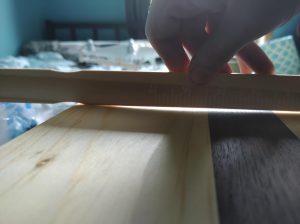How do you prevent warping or cracking in wooden furniture?
warping or cracking in wooden furniture
Wood is a natural, living material that reacts to the environment around it. It is hygroscopic, meaning that it naturally absorbs and releases moisture to maintain a constant humidity level. However, this sensitivity to the surrounding air can lead to warping when it is not handled properly. Fortunately, there are ways to minimize the impact of the environment on your wooden furniture.
One of the most important things you can do to prevent warping or cracking in your wooden furniture is to store it correctly. Wooden furniture is best stored in an environment that is both cool and dry. This is especially true during the winter, when the humidity drops significantly. This lower humidity can cause the wood to shrink and warp as it tries to adjust to the new conditions.
Proper storage also involves taking care of the furniture’s protective coatings. Protective coatings such as wood stain, paint, and polyurethane help shield the furniture from the rapid exchange of moisture with its surroundings, thereby fortifying it against the warping process. When storing your wood furniture, it is also crucial to keep it away from heat sources like fireplaces, heaters, and blowers. The fast drying of these elements can cause the wood to shrink unevenly and create stress in the material, which can lead to warping.

How do you prevent warping or cracking in wooden furniture?
Another way to avoid warping is to acclimate your wood before it is installed. This is the process of allowing the wood to settle in its final location for 3-7 days so it can fully acclimate to its surroundings. This is an essential step to take in areas with diverse climates or when shipping a piece of wooden furniture.
It is also a good idea to store your wooden furniture with the growth rings facing down. This will help prevent the wood from attempting to bend upwards and may even slow down the process slightly. Alternatively, you can place heavy objects such as books and nick-nacks on the shelves to counteract the wood’s tendency to curve upward.
The most effective method of minimizing warping is to use coatings to help the wood resist its natural inclination towards cupping. Painting is your best option as it helps reduce the rate of water absorption in the wood, but it won’t stop it entirely (as opposed to a stain that soaks into the surface of the wood). For the most effective results when using coatings to prevent cupping, ensure that you apply them to all sides of the wood.